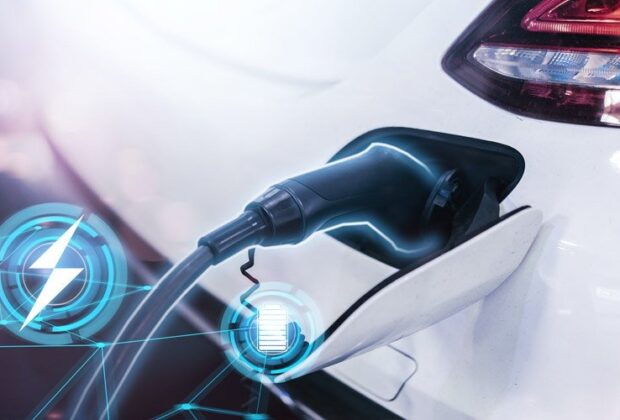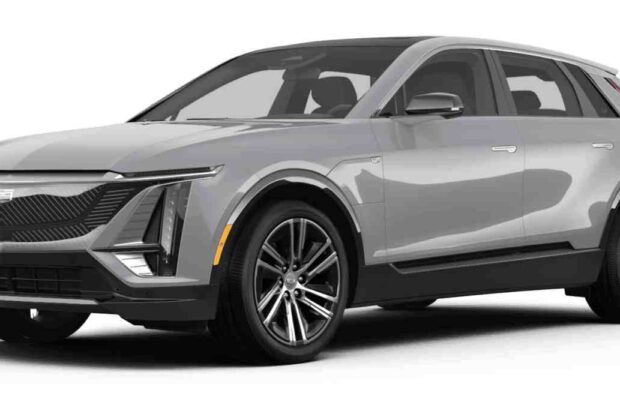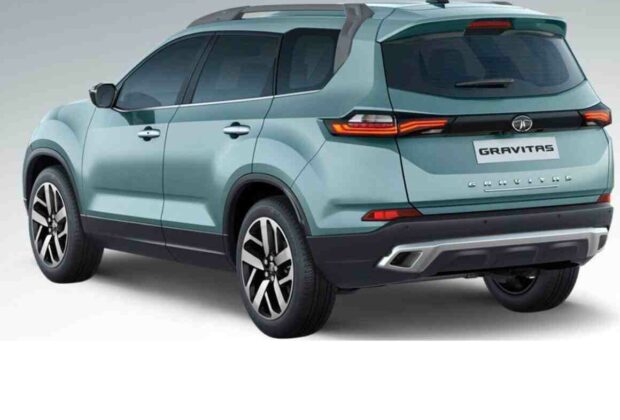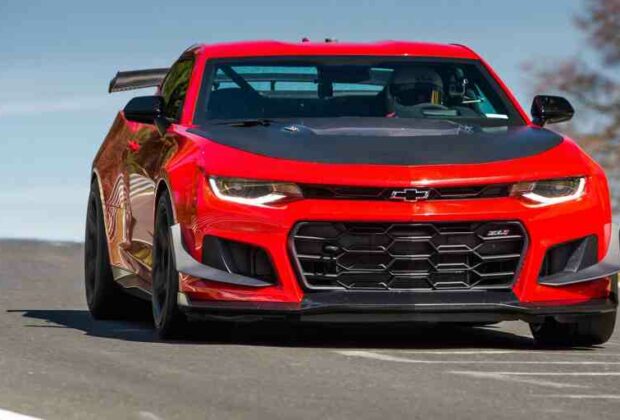Chevrolet has been one of the top producers of pony cars and some of the greatest vintage American muscle vehicles for a long time. A cult symbol for drag racing and pure power, the vehicles they make have inspired millions of individuals to get into the car scene, starred in some of the greatest movie cars in cinematic history, and exposed generations of people to the world of racing. Among the vast Chevrolet lineup, there is one model that stands out that even non-gearheads would likely be familiar with. The Camaro made by Chevrolet.
It could be a lifetime to explore every facet of Chevrolet and what has made them a preeminent American automaker with more than a century of history under their belt. Among all the engines and types that Chevrolet has manufactured, the LT1 small-block engine is a legendary engine that is considered to be among the best in the company’s history. It is on par with the Ford Coyote engine in terms of legendary status. We’ll explore what makes it so special, how well it powers some amazing Chevrolet Camaros, and why owning one is so highly desired.
The LT1 and Chevrolet
The LT1 engine was manufactured by General Motors-owned Chevrolet from 1970 to 1972. It saw a comeback in the 1990s, but more on that later. LT1 was a water-cooled, four-carburetor, 350 cubic inch, 5.7-liter small-block V-8 engine that was first introduced in 1970. It was initially used in several Chevrolet Corvettes and a series of Camaros to outperform models that had the extremely popular 5.0-liter Trans Am engine from the late 1960s.
The Camaro is Powered by a Unique Small Block Engine
While it was offered in several Corvettes, the 1970–1972 LT1 small block V–8 was exclusive to the Chevrolet Camaro Z/28 performance grades. This indicates that very few of these cars were ever produced and even fewer are still in existence now. There have only been 56 sales of 1970 Chevrolet Camaro Z28s, with an average price of $56,768, according to Classic.com.
The average price of a 1972 Z28 is $55,838; the average price of a 1972 Z28 is $44,095. Even while it isn’t as big or rare as the Chevrolet Chevelle SS, another of Chevrolet’s other iconic muscle cars from the 1970s, it is still a reasonably priced and sought-after vintage muscle car to purchase.
One of the best is thought to be the LT1.
Despite the fact that Chevrolet began manufacturing small-block engines in 1955, the 1970 LT1 is regarded as one of the greatest and most adaptable vintage engines available. It was available in hard-to-match incredibly impressive Camaros and Corvettes of the era, as well as in resto-jobs and a variety of vehicles, including sleeper trucks and Ford hot rods.
The fact why LT1s are so well-known in the auto industry, especially in the drag scene, is partly due to the engine’s lifespan, power rating, and interchangeability of parts. In addition, many believed that the 1970 Chevrolet Camaro Z28, with its original LT1 powertrain, was the last of the great American muscle cars because of the sharp decline in horsepower and torque that resulted from government restrictions on emissions beginning in 1970 (more on that later). The ultimate unrestricted small-block V-8 is the LT1, which is used in the 1970 Chevrolet Camaro Z28.
Original Models of Chevrolet Camaro LT1
The second generation of Chevrolet Camaros debuted in 1970. A new generation of Camaros was accompanied with a redesigned body that cemented the car’s legacy. The 1970 and later Camaros, along with muscle vehicles from other automakers like Ford and Dodge, have come to represent the muscle car look thanks to its fiercer, lower, and gnarlier appearance than the preceding generation.
However, Chevrolet had made significant improvements to more than simply the vehicle’s appearance. To complement the new racing style with some enhanced and asphalt-melting performance numbers, the new LT1’s horsepower and torque were increased, surpassing the powertrain of the previous version.
Chevy Camaro LT1 Essential Features
The second generation of Camaros features a low body, a wide and road-hugging posture, a long hood, chrome bumpers, a central rectangle grille, huge round headlamps, sharp nose lines, and a sloped rear. These features are displayed over the course of the original Chevrolet Camaro LT1’s three years of production. Along with having a powerful engine, the 1970 Camaro was the first model to be manufactured with a rear stabiliser bar, which improved handling and cornering.
Depending on how the driver want to operate the vehicle, the Chevrolet Camaro LT1 appeals to a wide range of drivers due to its availability in both manual and automatic transmissions. The Camaro is a remarkable example of the design of the day, with its very stylish interior from the 1970s that includes a huge steering wheel, curving instrument panel, more chrome polished circular dials than you can toss a Led Zeppelin vinyl at, leather inlays everywhere, and leather bucket seats.
A Comeback For The LT1 Small Block In The Nineties
Despite the fact that General Motors continues to build small-block engines, the original Camaro Z28 with the LT1 engine was only made for three years. However, as is often the case with popular culture, it resurfaces. General Motors introduced a range of vehicles in the 1990s that pay homage to the original LT1 small-block engine, often known as the LT1. The lineup consists of vehicles like the Chevrolet Camaro Z/28, Pontiac Firebird, and C4 Corvette.
The Chevrolet Camaro LT1s of the 1990s
The 350 cubic-inch LT1 V-8 engine that powers the first generation Chevrolet Camaro Z/28 was introduced as a high performance trim in 1993. Instead, the base model has a less potent V-6.
Even that same year, the 1993 Chevrolet Camaro Z/28 was selected as the Indianapolis 500 pace car. Although it may not be as powerful as the 1970 model, the LT1 engine found in the ’93 Z28 can nonetheless produce the oomph that muscle-car enthusiasts are constantly seeking—275 horsepower and 325 pound-feet of torque. Up until the end of 1997, when the LS2 engine took its place, GM kept making Camaros with the LT1 engine.
Key Features of the 1990s Camaro LT1
The LT1-powered 1990s Camaros, with their svelte, sporty, and elegant styling, are recognised as the return of stock power in muscle vehicles. A low-sloping hood hangs low to the road, modern aerodynamic lines are flaunted along the body, and a wide back window and windscreen combine to provide an enormous field of vision. The fourth generation Camaro is a beast under the hood thanks to the LT1 engine, which is evident in every aspect of its appearance.
Standard equipment includes an automatic gearbox, but if you’re a purist and search hard enough, you can also find a 1993 Camaro Z/28 with a six-speed manual Borg Warner gearbox. The fourth generation boasts computer-selected springs and heavier stabiliser bars for a more responsive and comfortable ride. It was intended to be the next evolution in powerful motoring.
What Future Chevrolet Camaros Will Look Like
With automakers increasingly committed to improving electric and hybrid vehicles, the current world may seem a bit of a scary place to enthusiasts of muscle cars and vintage gas engines. Where that leaves the muscle vehicle of the future may also be on your mind. There may still be hope if you are not convinced about the switch to electric vehicles or if you think that dealers are not supporting the change.
Is There A Chance For The LT1 Small Block Engine To Return?
Regretfully, given the direction the auto industry has been taking in the last ten years, it is extremely doubtful that the LT1 engine in its original configuration—or even the one from the 1990s—will ever return. This is probably because more people in America are concerned about global warming and rising emissions, and most of them prioritise fuel efficiency when purchasing a new vehicle.
Similar to numerous other automakers, Chevrolet has pledged to transition to an electric vehicle in the future. Rumour has it that an all-electric Camaro SUV will be shown soon to take on the Ford Mustang Mach E. Although it won’t be the familiar and beloved Camaro, this could be the muscle car of the future.
Anticipating Future Chevrolet and Muscle Vehicles
With its legendary performance, the Chevrolet Camaro Z28 has been lighting up the racecourse and streets for many years. That it won’t end quite yet makes us joyful! The announcement that the sixth generation 2025 Chevrolet Camaro Z/28 will be released excites us much. The 2025 Chevrolet Camaro Z/28 is sure to thrill you for a number of reasons, such as rumours that it will be built on GM’s Alpha Platform, have an available manual gearbox, and an engine that might create up to 670 horsepower. It also looks absolutely stunning.
The 2025 Camaro Z/28 and the 2024 Ford Mustang are two muscle cars that we are left to be excited about because of their raw available power, their combined use of gas-power and new technology, and the possibility that they could be seen as the last of a breed of cars from bygone eras, with the Dodge Charger ditching the V-8 in favour of an inline-six or electric motors. The 2025 Chevrolet Camaro Z/28 is a beautiful homage to the original Z28, which went on to inspire some amazing muscle vehicles, even though it may not have the nostalgic LT1 engine from the past. This is good news for enthusiasts of gas-powered motors and muscle cars in general.
Read Full Article














